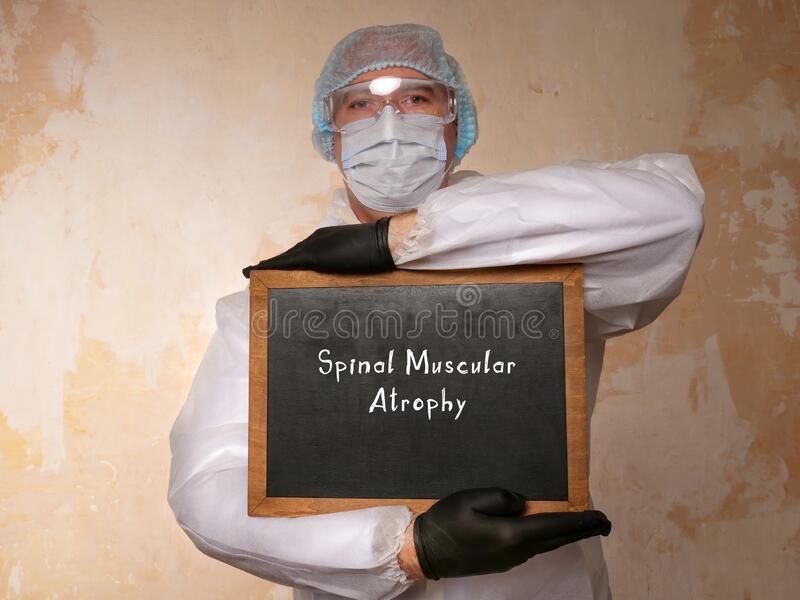

- Call 908 543 4390
- Email
- Dr.Joni Redlich PT,DPT


Spinal muscular atrophy (SMA) is a genetic disease that affects the central nervous system, peripheral nervous system, and voluntary muscle movement (skeletal muscle). A majority of nerve cells that control muscles are located in the spinal cord. SMA primarily affects muscles, because they don’t receive signals from specific nerve cells, called motor neurons. When muscles aren’t stimulated by nerve cells, they get smaller or atrophy. Because SMA involves the loss of nerve cells called motor neurons in the spinal cord, it is classified as a motor neuron disease.
Degree of motor function decrease is roughly correlated to the age at which SMA symptoms start. Generally, kids who have symptoms at birth or in infancy usually have the lowest level of functioning (type 1). As a rule, later-onset SMA with a less severe course (types 2 and 3, and in teens or adults, type 4) corresponds with progressively higher levels of motor function.
Chromosome 5 SMA is caused by a deficiency of a motor neuron protein called SMN, for “survival of motor neurons”, which appears necessary for normal motor neuron function. SMN has a crucial role for gene expression in motor neurons.

The scope of SMA symptoms are broad, and symptoms range from mild to severe. Typically the “proximal” muscles (closer to the center of the body) are the most affected in the body. SMN-related SMA presents with weakness of the voluntary muscles as a primary symptom and often include shoulders, hips, thighs, and upper back. Lower limbs seem to be more than upper limbs, and there is a decrease in deep tendon reflexes. If the muscles used for breathing or swallowing are impacted, there may be complications with those functions. Similarly, back muscles weakening may result in development of spinal curvatures.
Recently, there have been exciting treatments for various types of SMA that have been complete game changers for individuals who have the disease. Current research strategies have focused on increasing the body’s production of the SMN protein that’s lacking in the chromosome 5-related forms of SMA. Methods include approaches to increase motor neuron survival in adverse circumstances.
The Food and Drug Administration (FDA) approved Spinraza (nusinersen) for the treatment of SMA, on Dec. 23, 2016. Spinraza is designed to treat the underlying defect in SMA, meaning it potentially might be effective at slowing, stopping, or possibly reversing the symptoms of SMA.
In May 2019, the FDA approved Zolgensma (onasemnogene abeparvovac-xioi), which represents the first gene-replacement therapy for a neuromuscular disease. Zolgensma is a one-time intravenous infusion, and is used to treat pediatric patients younger than 2 years of age with SMA, who exhibit bi-allelic mutations in the SMN1 gene. This includes those who are presymptomatic at diagnosis. Read more information at: FDA Approves AveXis’ Zolgensma for Treatment of Spinal Muscular Atrophy in Pediatric Patients.
Additionally, the FDA approved risdiplam (brand name Evrysdi) in August 2020, for the treatment of SMA in adults and children two months of age or older. It is an oral medication that functions to raise SMN protein levels, by boosting production from the SMN2 “backup” gene.
For a detailed and simple-to understand overview of SMA, visit the Muscular Dystrophy Association website for the SMA fact sheet at:
https://www.mda.org/sites/default/files/2020/11/MDA_SMA_Fact_Sheet_Nov_2020.pdf
Currently, one of the best known people with SMA is Shane Burcaw. Shane has been affected by SMA most of his life, yet it doesn’t define him fully or keep him from living a productive life as a disability advocate, speaker and author. Together with his wife, Hannah, they run a popular YouTube channel ,“Squirmy and Grubs” and share their relationship story with the world, with the hope to change the way society thinks about disability.
The link below is a video on the channel where Shane talks about his diagnosis and early life. It also showcases the amazing relationship he and his wife share.
 So many children participate in recreational fall and spring soccer teams. It’s a fun intro to the game and usually results in the little kids running in large groups up and down the field!
So many children participate in recreational fall and spring soccer teams. It’s a fun intro to the game and usually results in the little kids running in large groups up and down the field!
Soccer can be a fun experience for many children, but it can be frustrating for others. When children struggle with running as fast as their peers or following the rules of the game, the fun can be lost. This leaves parents wondering whether they should even have signed up their child at all.
Why do some children struggle with soccer? We can look at several different possible reasons to try to understand.
Can the child run fast enough? If the child can’t keep up their teammates, soccer can be an exercise in frustration. Why bother trying when you’re not having success!
Can the child stand on one leg for longer enough to kick the ball? If the child feels like they’re going to fall over, kicking is no fun anymore!
Can the child listen, look, and move at the same time? For some children, using more than one sense and moving at the same time is just too much! (Think rubbing your belly and tapping your head at the same time.)
The younger we can help children find success in a movement activity the better. Soccer may not be the best fit for your child, but they also may need some extra help to get their bodies ready to successfully participate in soccer or other recreational activities.

The goal of any extra help is to get the child out participating with friends and family to do the things they love! It is also so helpful to do so at a young age, before a child’s confidence is impacted.
Many parents will seek out extra support when their children are around 5 years old, which is perfect. The same movement skills that need to be developed for soccer and other recreational activities are the ones that will support the child in the classroom too! So its success all around!
Have you heard the term “crossing midline”? It is one of those phrases thrown around a lot from pediatric physical and occupational therapists. We will often tell parents that their child needs to practice crossing the midline.
So what is it???
The midline is the center of your body. In this instance, we’re talking about splitting the left and right sides of the body.
When one arm crosses over to the other side, whether to write a sentence or reach for a toy, this is called “crossing the midline.”


When children have difficulty crossing midline, they might pass a pencil between hands instead of writing a full line with one hand.
The child may have difficulty putting their socks and shoes on.

Another child might often sit in a W- position because it takes crossing midline to get in and out of other positions.
If your child has difficulty crossing midline, it is often recommended to practice this skill. Before you do, check out the video below to learn the #1 Secret to Crossing the Midline!
If your child does need more practice, there are many fantastic activities, dances and games you can try!
Here are a few awesome resources to check out:
A new interactive tv show on Sprout called Tree Fu Tom has made its way over the pond from the UK. It is aimed at children ages 3-7 and my 4 year old has been asking to watch it again and again.
The show is about a boy named Tom who shrinks and turns into a cartoon to enter the world of his garden. Tom and his friends encounter challenges and have to problem solve solutions. This is where the magic comes in. Read more
As a mom of two girls and a PT for kids I often get asked about milestones and whether a parent should be concerned. There are many clues to whether a parent should be concerned that go beyond looking at a chart that tells you when a child typically will develop a skill. Read more
What does torticollis look like? A child will tilt their ear towards the shoulder and will turn to the opposite direction. A child with left torticollis will tilt their head to the left and prefer to look to the right. A child with right torticollis will tilt their head to the right and prefer to […]
